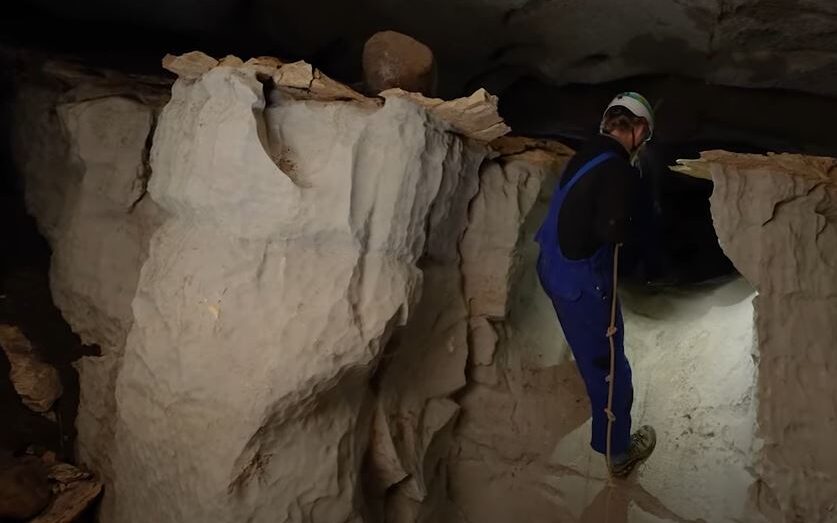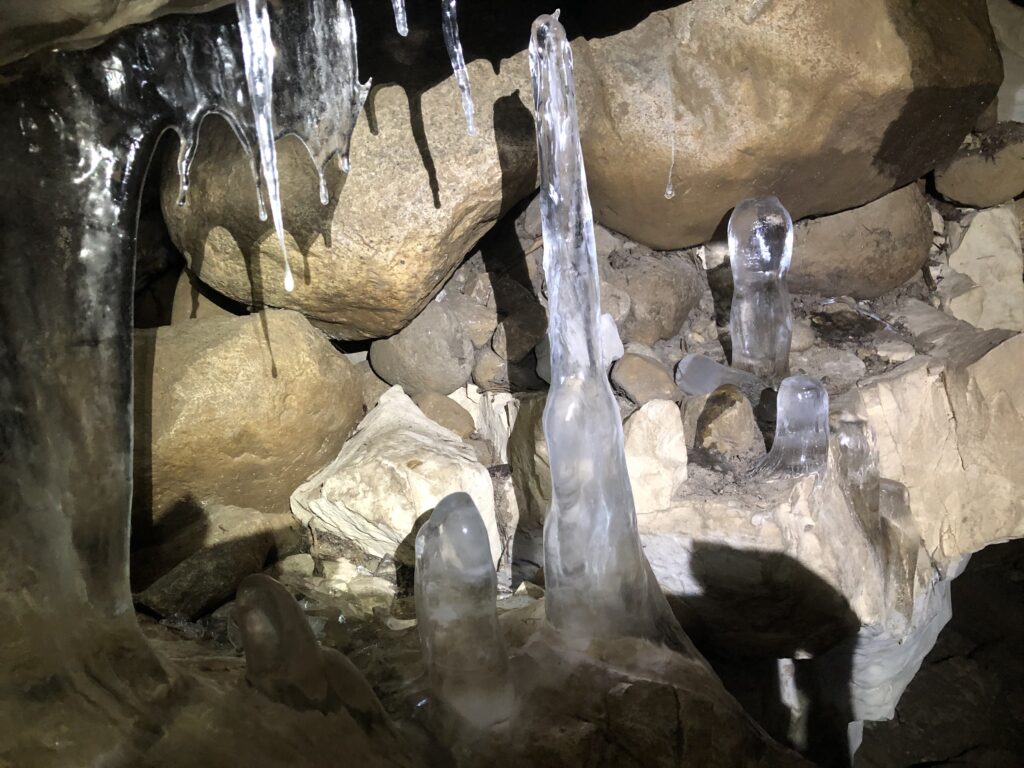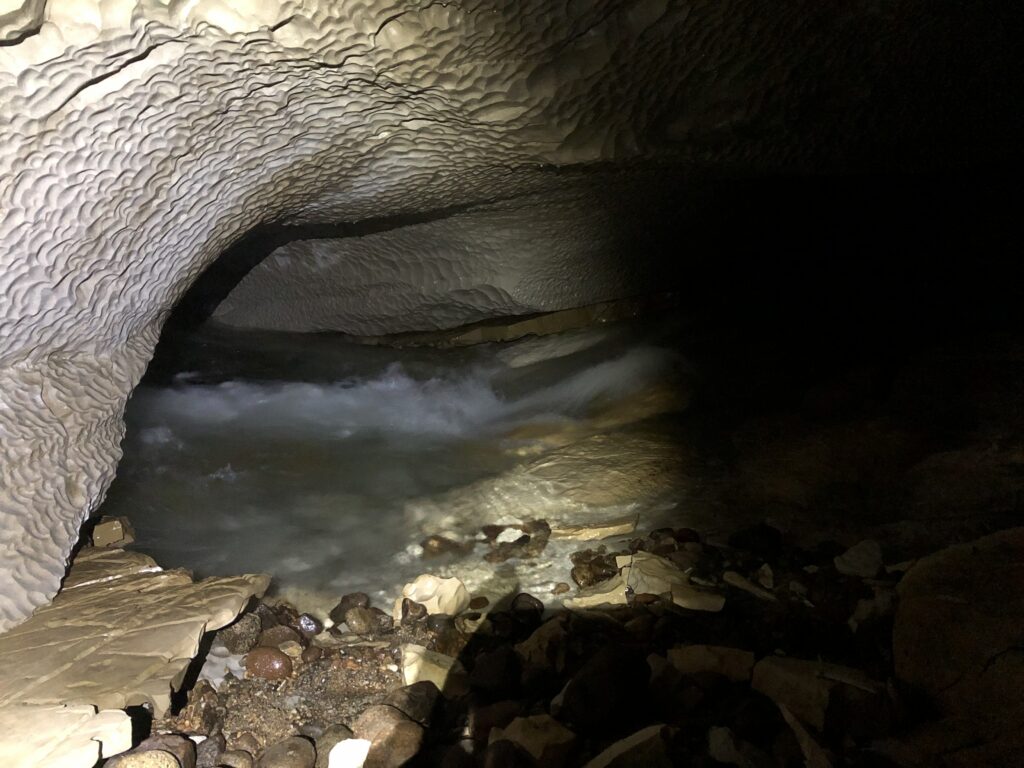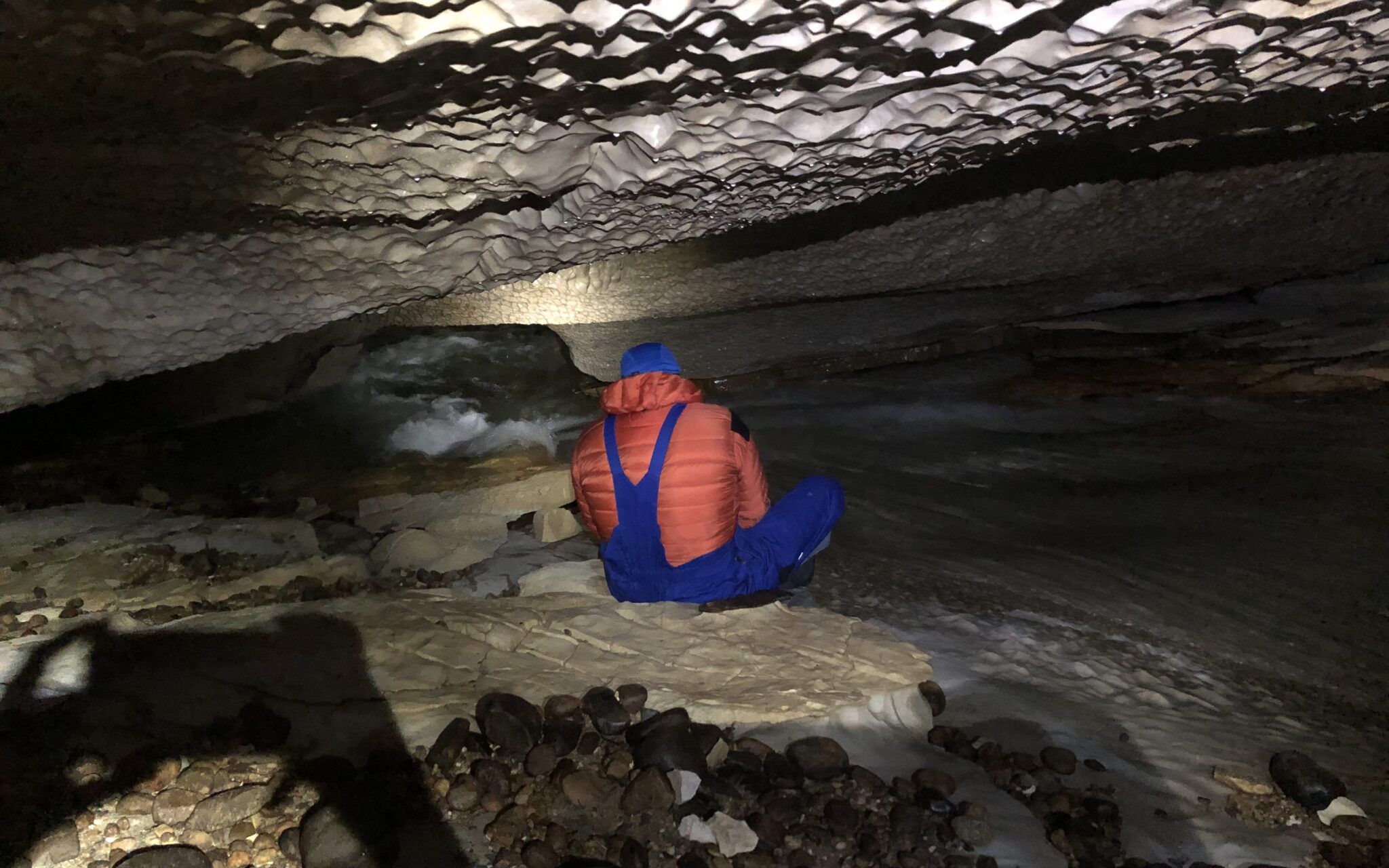June 20, 2023
Summer is finally here, although snow still lingers nearby in the Wind River Range. The epic snowfall has resulted in a beautiful blanket of colors across Fremont County, and Sinks Canyon is filled with vibrant flowers and lush greenery. The spring runoff has been unusual this year, lasting much longer than normal. The increased water volume in Sinks Canyon means the famed “Sink” has been overflowing, and the overflow channel has become a rushing river that brings its own new beauty to the canyon.

Although the disappearance of the river into the Sink had been a mystery for hundreds of years, a discovery in the 1990s shed a new light on the route of the disappearing waters. A Sinks Canyon State Park staff member discovered an underground cave system that runs approximately 1/8 mile long and 20 to 100 feet deep underground on the Shady Side of the canyon. Exploration of the cave also resulted in finding the Popo Agie River as it makes its way from the Sink to the Rise.


The cave system, named Boulder Choke Cave, is a series of limestone caverns that flood and drain every year with the spring melt. We now know that the cave system fills with water, and once the caverns reach maximum capacity, the water can no longer travel underground, resulting in the filling of the overflow channel. The river normally flows at approximately 30 cfs (cubic feet/second), but when the snow melts in the spring, the runoff increases the river volume to 1000 to 2000 cfs. The increased volume of water scours the underground limestone, creating channels and rooms, perfect for cave exploration in the dry months.

While most guests to the canyon are amazed by the towering canyon walls and the tranquil river, some guests might be seeking something a bit more adventurous! Thrill seekers may be enticed by the idea of making their way underground to explore the cave system. The entrance is hidden in a nondescript pile of boulders, and it requires both flexibility and bravery to squeeze through the 16X16” opening. Once guests are through the initial squeeze, they must crawl through a 20 foot tunnel before the cave system opens up to a room large enough for a group of 10 guests to comfortably stand. Underground caverns range from five feet to 40 feet tall. The largest room is over 80 feet wide, and includes a view of the Popo Agie River as it flows underground. Guests may also be treated to the site of fish living in the underground pools. These fish likely made their way into the caves through the Sink, but were unable to make their way back out of the Rise. They live in the complete absence of light and have lost their pigment, appearing white to lucky guests who catch a glimpse of them.
Cave tours are available to adventure-seeking guests mid-August to mid-April for $20 per person. The tour includes all caving gear, protective clothing, safety equipment and a trained cave guide. Participants will learn about the geology of the cave system, unique microbial life forms called snottites and what it’s like to experience an absolute absence of light. Tours last approximately two to three hours, including the ¼ mile hike to the cave entrance. Follow Sinks Canyon State Park on Facebook to learn more and see when cave tour dates open up for the fall season https://www.facebook.com/SinksCanyonStatePark/.

Author Bio: Jessica Moore is the Superintendent at Sinks Canyon State Park. Originally from the Upper Peninsula of Michigan, she started her career as an Interpretive Ranger with the National Park Service. Jessica moved to Washington State where she spent 18 years working as an educator at a 725-acre wildlife park. She and her family moved to Lander in 2021, and she was hired on with WYO Parks in September of 2022. Jessica and her family enjoy the great outdoors and abundant wildlife that Wind River Country has to offer.
Posted in Notes From the Field